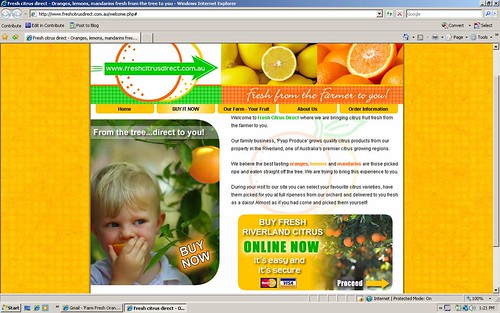What makes a great website is a question you could debate on for a long time, but undeniably one of the criteria should be its ability to stand out and prove memorable for the visitors. This is something that too many people ignore, and that is too often forgotten. These days it seems that all web designers tend to focus on is making a website ‘minimalistic’ in a way that will be easy to read and to approach. Of course that’s important too, but if it means that your site is going to look just like every other site and be mostly just white with black text, then you’re going to struggle to make much of a splash and most visitors will forget your site as soon as they leave it – meaning they’re unlikely to come back.
The problem is that ‘boring’ sites have taken over by proving themselves to be effective in getting people to stay on a page and actually read it. No one wants to struggle to focus on the text they’re reading, so white and black makes a lot of sense. No one wants to spend long on a website that looks overly crowded and busy – particularly on a small mobile screen – so the screens are mostly just white with a thin menu at the top.
How can you make your site stand out while still giving it all these advantages? Well one solution may be to give it features and to teach it to react to the person reading it. And you can do that with scripts and cookies. Read on to see how this might work and why scripts and cookies are such powerful tools for more interesting and intuitive web design.
What Are Scripts and Cookies?
Cookies are tiny files that websites save on your computer whenever you visit a page. This then allows the website to look for those cookies the next time a visitor comes back and thus it’s possible for it to identify whether you’ve been to the page before or not. ‘Script’ meanwhile means PHP or JavaScript which is code that runs on a website and can be told to look for these cookies and behave in certain ways.
These cookies can contain pretty much any information and it’s possible for you to store different cookies at different times. At the same time, you can also use scripts to look for more than just cookies – they can check the time, check the computer that’s being used to display the site and more.
A Dynamic and Personal Site
What this means ultimately is that your site can change and adapt to the time and to the person using it. So for instance, someone who is visiting the site for the very first time can be identified as such, as can a returning visitor. You could then have your website recommend further reading based on their reading patterns so far – something few sites do. Imagine loading a link on Google you’ve been to before and then seeing a message in the corner saying ‘Welcome back’ and ‘did you enjoy that last article on bicep training? Here’s another one for you!’.
Alternatively, imagine a website that would allow you to change the size of the font. You’re struggling to read on your iPhone, then you notice in the left column an option to + or – the font size. You change the size and feel immediately impressed with the site. Or how about one that randomly changes the wallpaper from time to time? There are few websites that look different every time you visit, or every time you load a new page and this again might be just the way to stand out as something different.
There are countless examples of things to do with cookies and scripts, but the point is that I can’t just tell you them now. The idea is to find your own exciting uses for them and then to come up with something original and interesting that will wow visitors and help you to stand out as something a bit different…



